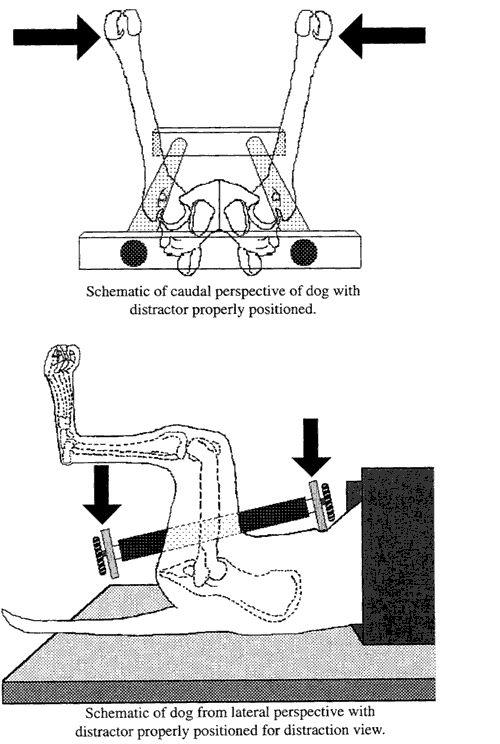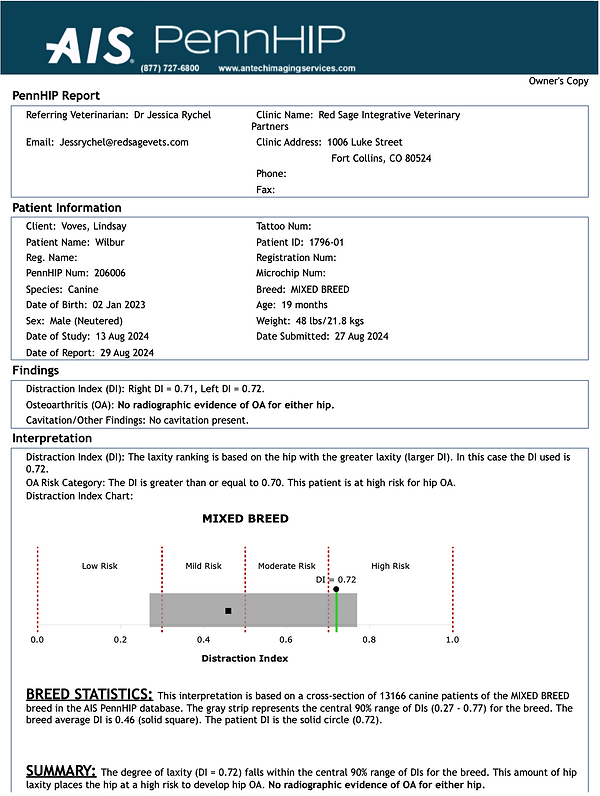PennHIP Radiographs
PennHIP Certification is the most reliable method for predicting future hip osteoarthritis in dogs. At Red Sage, we offer this advanced imaging not only for breeders selecting the healthiest dogs, but also for pet owners who want early insight into their dog’s hip health. PennHIP can identify risk for hip dysplasia long before traditional radiographs.
To certify your dog’s hips, we perform a quick, safe procedure under sedation. Along with standard hip-extended views, we take specialized compression and distraction radiographs using a PennHIP positioning device. These images allow radiologists to calculate a Distraction Index (DI)—a precise measurement of hip laxity.
A lower DI means tighter hips and a lower risk of future hip dysplasia or arthritis. This information supports responsible breeding, early intervention, and better long-term joint care. PennHIP radiographs must be taken by certified veterinarians, and we’re proud to offer this specialized service at Red Sage. For more details, talk with your Red Sage veterinarian or visit www.pennhip.org
.

Sample report
Below is a sample PennHIP report provided to pet owners after imaging. This report shows the Distraction Index (DI) for each hip, which is used to assess the degree of joint laxity and the
dog’s risk of developing hip osteoarthritis (OA).
In this case, the DI is 0.72-- placing the dog in the high-risk category for hip dysplasia and future OA, despite there being no current radiographic evidence of arthritis. This highlights the value of PennHIP in detecting risk before signs of disease appear, allowing for earlier, more proactive care.
PennHIP reports include:
The Distraction Index (DI) for each hip
A breed-specific risk chart
OA risk category (low, mild, moderate, or high)
A visual summary comparing your pet's DI to the breed average
Notes on any signs of existing arthritis or other findings

